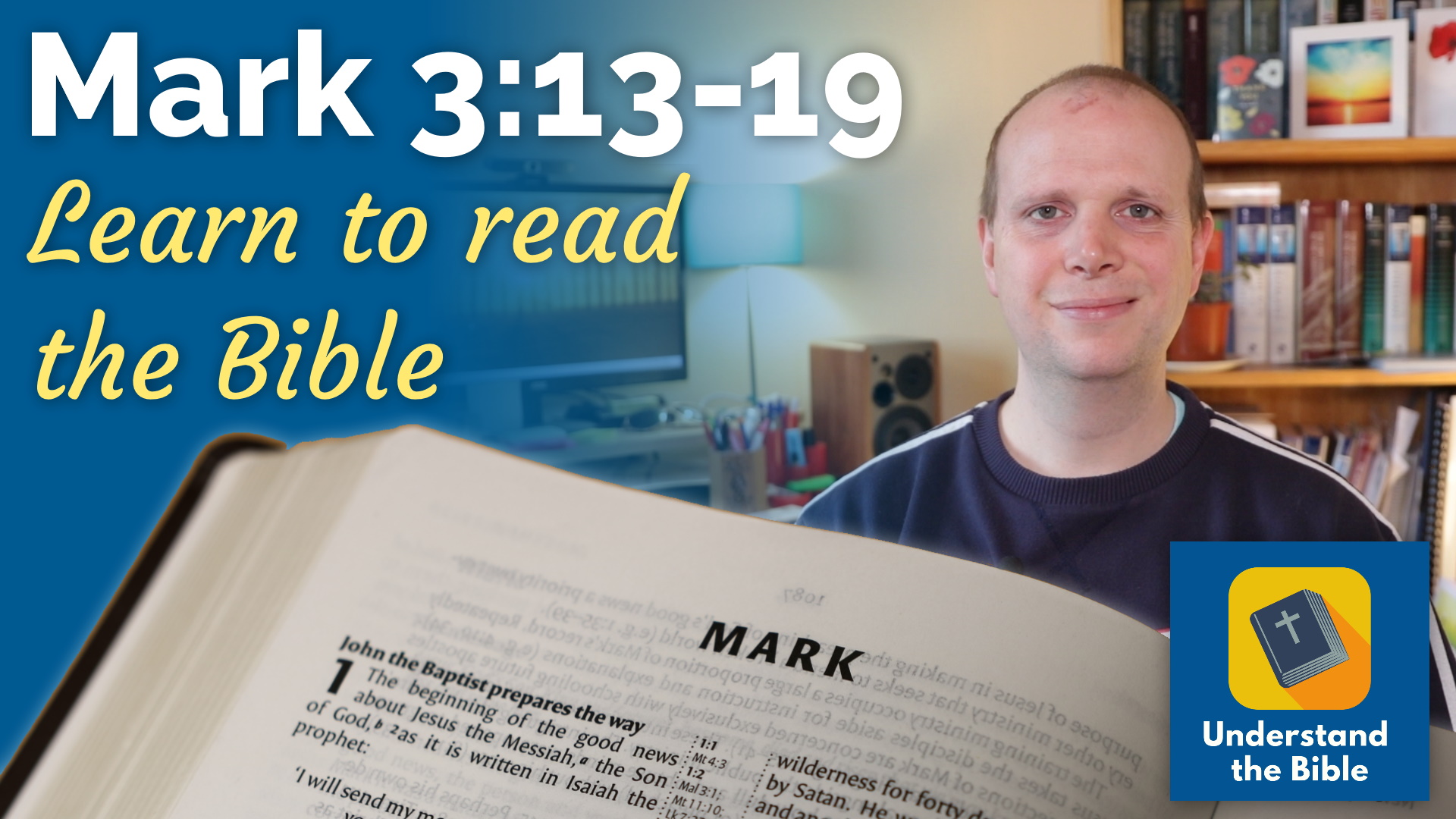I’ve just published the next part of the Learn to read the Bible series on Mark’s Gospel. This week we are looking at Mark 6:6-13, where Jesus sends out the Twelve disciples.
For those who are coming to this new, the idea behind this series is not for me to simply explain everything to you, but rather to give you things to think about yourself. This is about training you to read the Bible for yourself, rather than just giving you all the answers!
See this page if you’d like a few pointers for how to use these videos. Don’t forget to pray!
You can read the passage online here (although I’d suggest it’s better in a physical Bible). You may also want to have a pen and paper handy to jot down notes and things you want to look into more.
Key points from Mark 6:6-13
- Jesus sends out the disciples, he gives them authority over impure spirits and they preach. So the disciples are sent out to do and continue what Jesus was doing. Spend some time thinking about our own lives and how Jesus sends us out into the world on his mission.
- Jesus tells them not to take anything with them. This says a lot about what they were to trust in – not possessions, or money, but a simple trust in God. This speaks into our world which is obsessed with material things! Think about what we trust in – are we trusting too much in material things?
- Jesus says to stay with a house that accepted them, but to move on (‘shake the dust off your feet’) from a place which rejected them. It shows a close association of Jesus with his disciples – when people accepted them, they accepted Jesus; when people rejected them, they rejected Jesus. How does this help us think about presenting the gospel? Does it give any encouragement?
- The disciples preached that people should repent – a message which was core to Jesus. Our lives should look something like his – even if we don’t do the same amazing miracles! Our message is the same. How can our lives proclaim that message, whatever we do for a living?
Take a few moments to re-read the passage, think, and pray.
Looking for more?
You can see the rest of the videos in this series on the this page. If you’d like a more focussed series teaching the Christian faith, check out the teaching programme.
You might also want to see the previous episode in the series on Mark 6:1-6.










